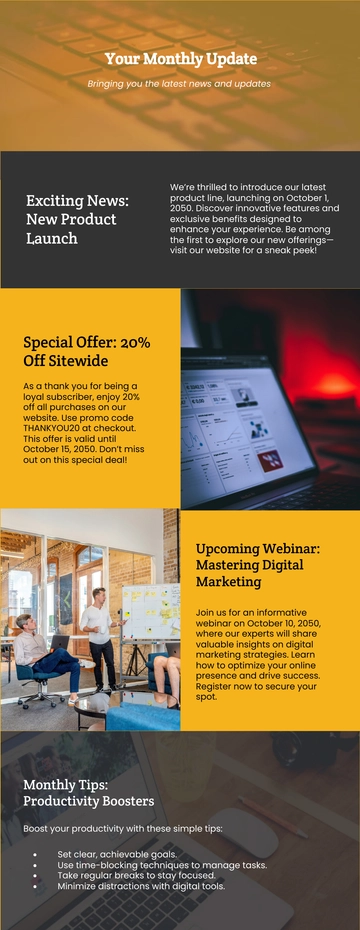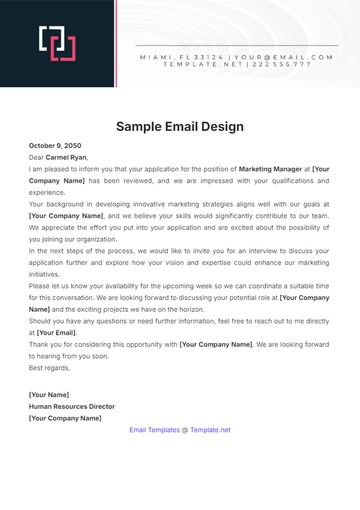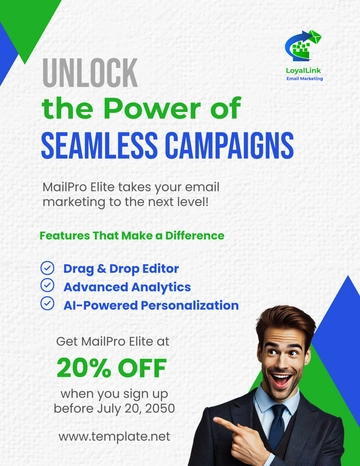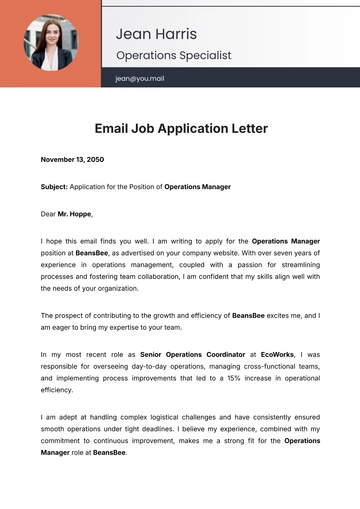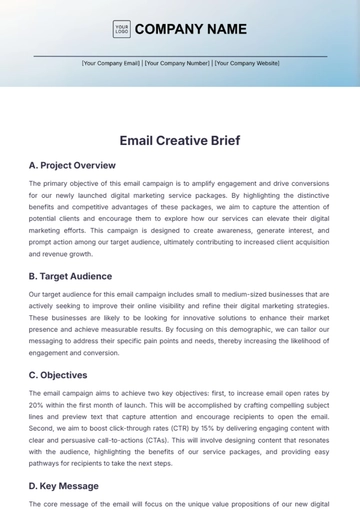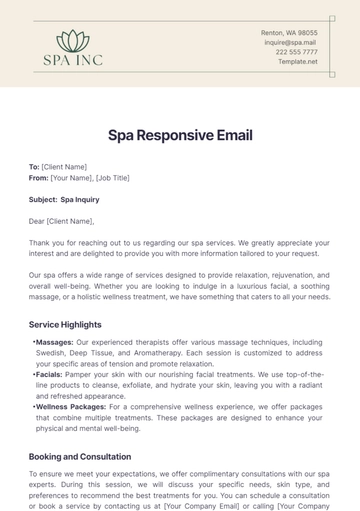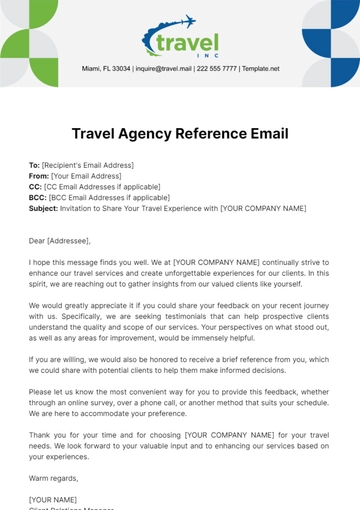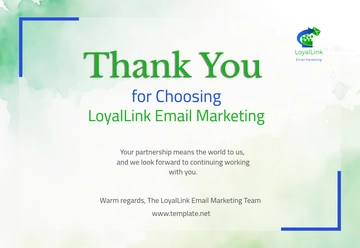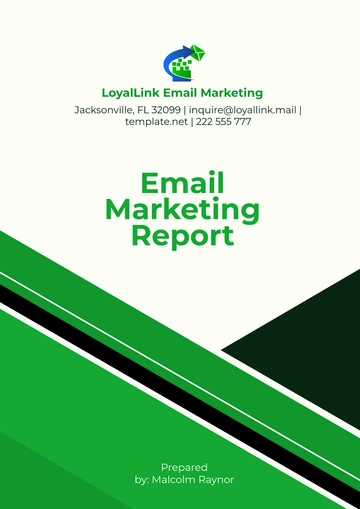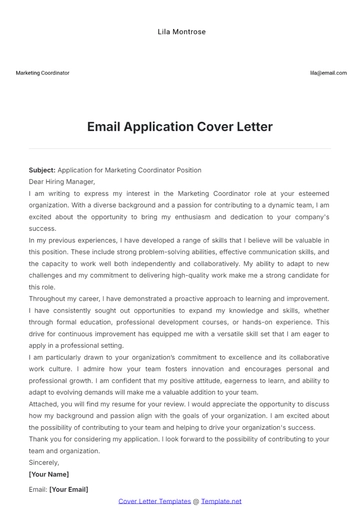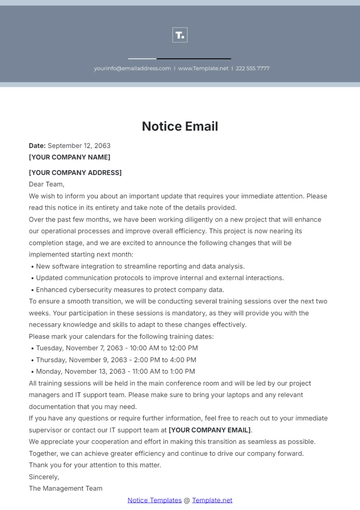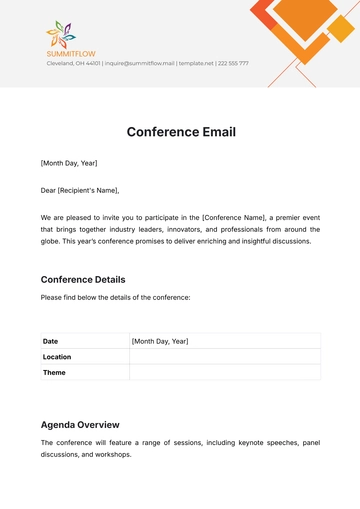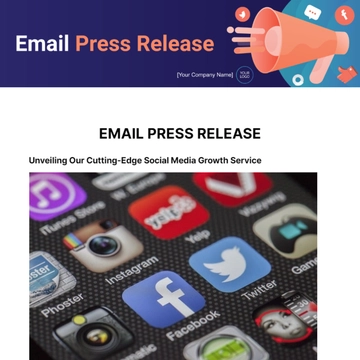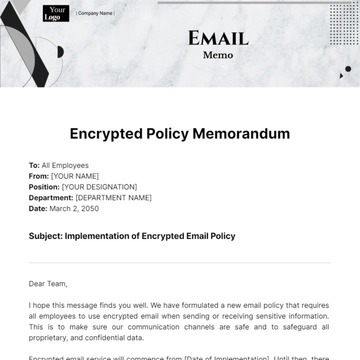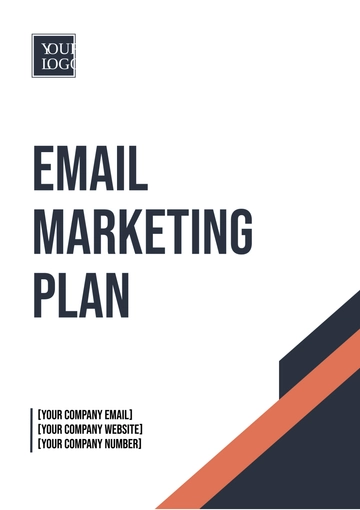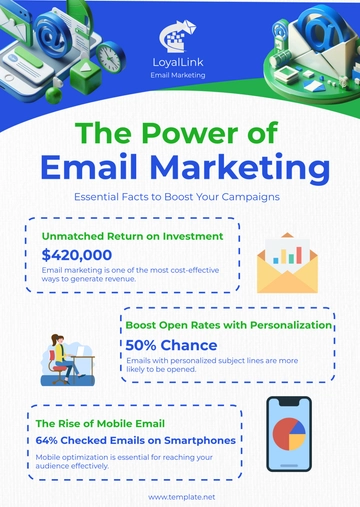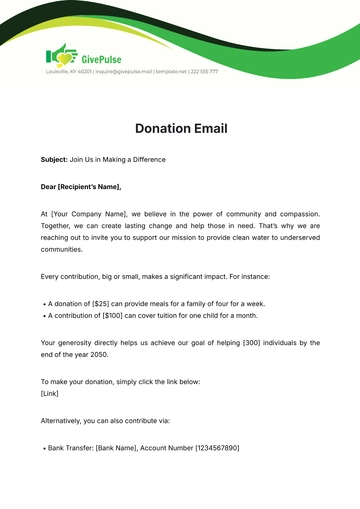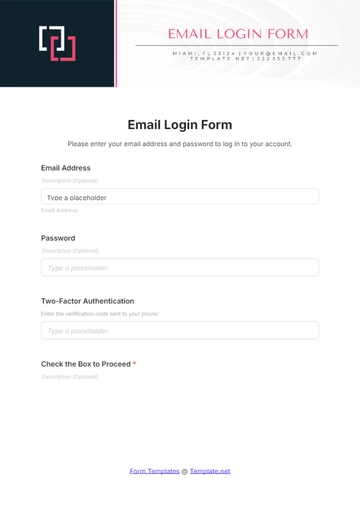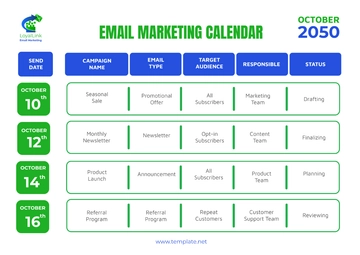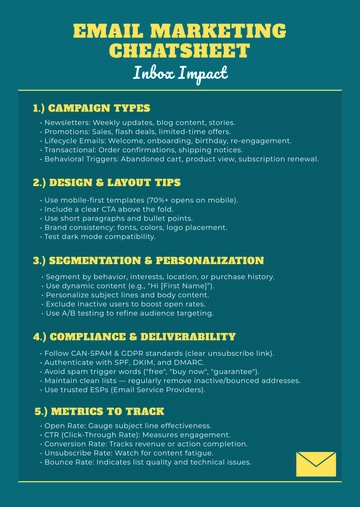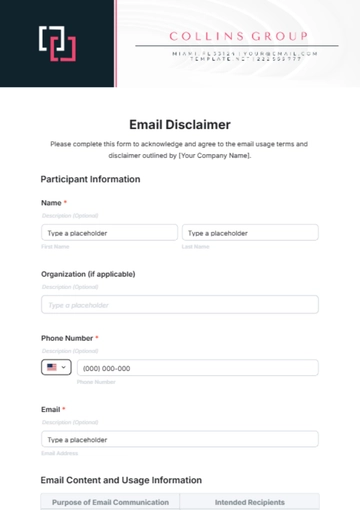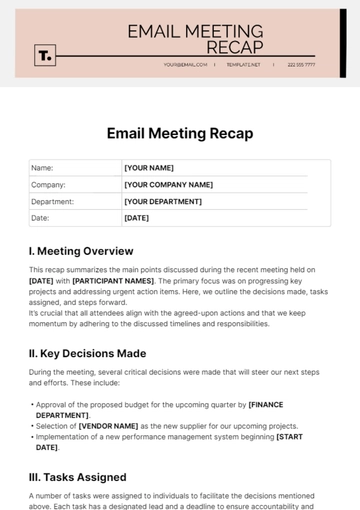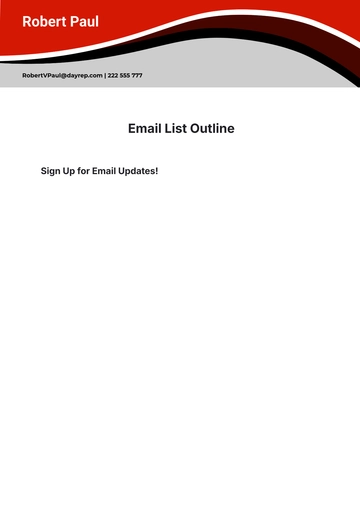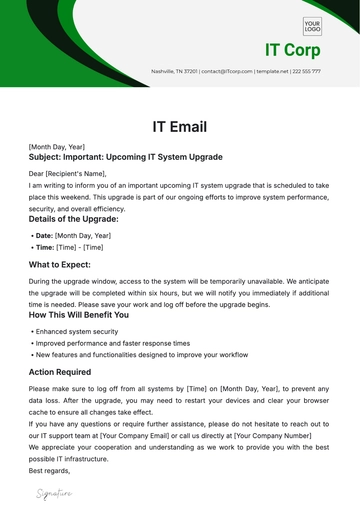Free Sales Email Campaign Protocol
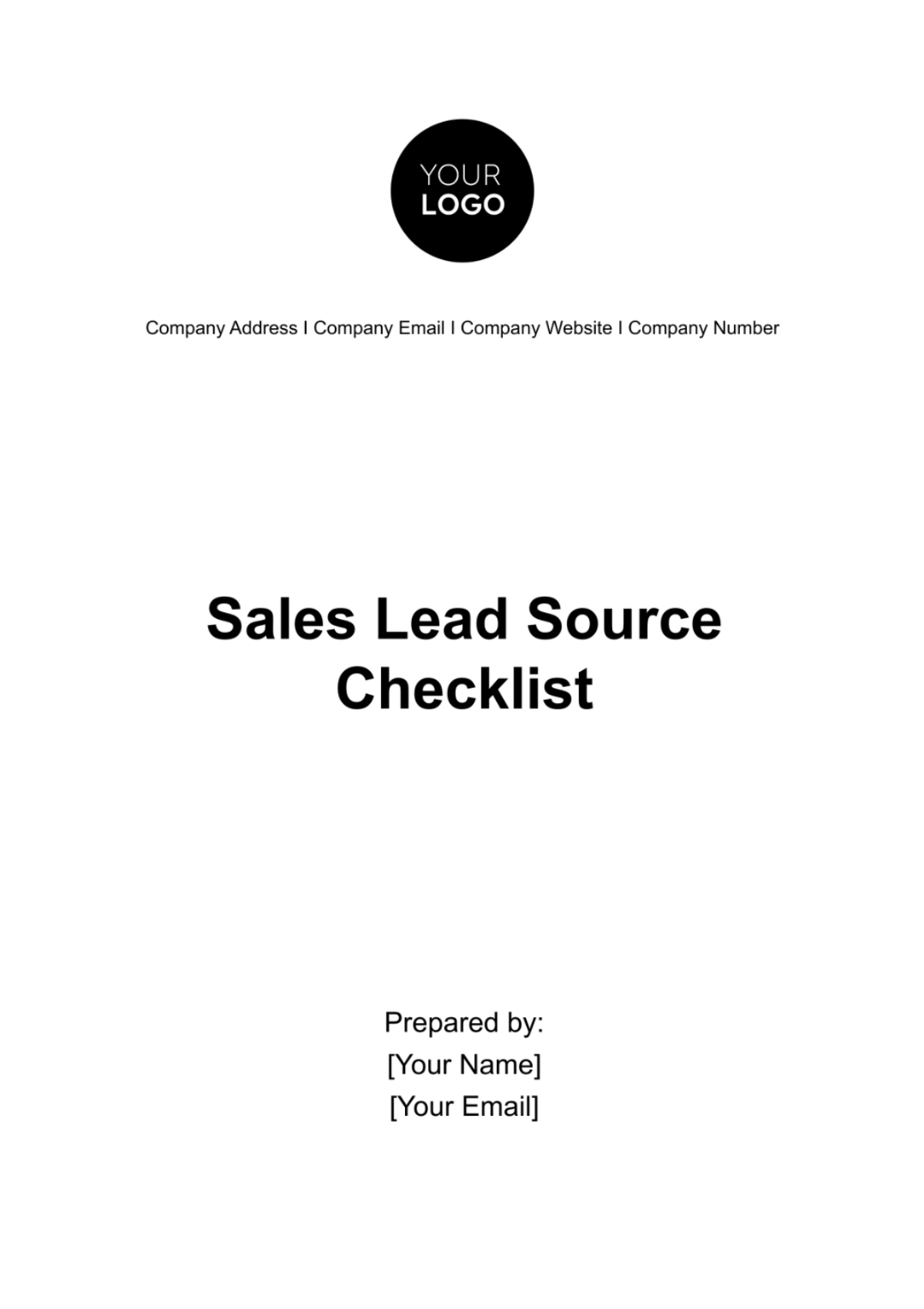
I. Objective
The primary objective of this [Your Company Name] Sales Email Campaign is to strategically leverage email marketing to achieve the following goals:
A. Campaign Planning:
1. Define Goals: Our campaign aims to achieve the following specific objectives:
Increase Revenue: Boost sales by promoting our clothing products to both existing and potential customers.
Promote New Collections: Showcase our latest clothing collections, emphasizing their unique features and style.
Clear Inventory: Liquidate excess or outdated inventory through targeted promotions and discounts.
2. Target Audience: To ensure effective engagement and personalized content delivery, we will meticulously segment our email list based on the following factors:
Past Purchase Behavior: Tailor emails to customers who have made previous purchases, offering complementary products or exclusive discounts.
Demographics: Customize content and product recommendations based on age, gender, and other demographic information.
Location: Promote region-specific offers, events, or store openings to customers based on their geographical location.
3. Email Calendar: A well-planned email calendar will be established to maximize campaign effectiveness:
Send Dates and Times: Determine the optimal days and times for sending emails, considering factors such as recipient time zones and open rate trends.
Email Content: Create a content plan that aligns with campaign goals and seasonal trends, ensuring consistency and relevance in each email.
By setting clear and measurable goals, defining our target audience, and planning our email campaigns meticulously, we aim to promote our clothing brand, boost sales, and foster meaningful engagement with our customers through the medium of email marketing.
II. Email Content
A. Subject Lines
Craft attention-grabbing subject lines that encourage recipients to open the email. Subject lines should be:
Intriguing: Create curiosity or pose questions to pique recipients' interest.
Relevant: Convey the email's content and value to the recipient.
Urgent: Incorporate a sense of urgency or exclusivity to prompt immediate action.
Personalized: Include the recipient's name or reference their preferences when applicable.
B. Personalization
Personalize emails to establish a deeper connection with recipients:
Recipient's Name: Address the recipient by their first name to make the email feel more individualized.
Product Recommendations: Leverage data on the recipient's browsing and purchase history to suggest products they are likely to be interested in.
Tailored Messaging: Craft content that resonates with the recipient's preferences and behaviors, such as highlighting categories or styles they've shown interest in.
2.3. Compelling Copy
Write persuasive and concise email copy that effectively communicates the value of our products:
Product Benefits: Highlight the unique features, benefits, and solutions our clothing items offer to the recipient.
Storytelling: Share engaging stories or anecdotes that connect the recipient to our brand's mission and values.
Benefits Over Features: Emphasize how our products enhance the recipient's life or solve their problems.
Clear and Actionable Language: Use clear and persuasive language that encourages recipients to take the desired action, such as making a purchase or exploring our website further.
III. Segmentation
A. List Segmentation
Segmenting the email list is essential for delivering tailored content to different groups of recipients:
Customer Behavior: Analyze past purchase behavior, including frequency, recency, and monetary value (RFM), to create segments like high-value customers, occasional shoppers, and inactive customers.
Preferences: Utilize data on product categories, styles, and brands that recipients have shown interest in to customize emails accordingly.
Engagement History: Segment based on email engagement metrics, such as open rates, click-through rates, and response to previous campaigns, to identify highly engaged subscribers, re-engagement targets, and disengaged subscribers.
Demographics: If applicable, consider demographic factors like age, gender, location, and income to personalize content based on recipient characteristics.
3.2. A/B Testing
A/B testing allows us to optimize email elements for maximum effectiveness:
Subject Lines: Test different subject lines to determine which ones generate higher open rates and better engagement. Variables to test may include tone, length, personalization, and urgency.
Email Copy: Experiment with variations in email copy, including wording, length, storytelling, and the use of benefits versus features.
CTAs (Call to Action): Test various CTAs to identify which ones drive higher click-through rates and conversions. Test CTA text, placement, color, and design.
Visual Content: If applicable, test different visuals, such as product images, lifestyle shots, or video content, to evaluate their impact on engagement and conversion rates.
IV. Email Sending
A. Frequency
Determining the optimal email frequency is crucial for maintaining a positive relationship with subscribers:
Subscriber Preferences: Respect subscriber preferences by allowing them to choose their email frequency when they subscribe or by offering email frequency options in their account settings.
Segmentation: Adjust email frequency based on segmentation criteria. For example, high-value customers may receive more frequent emails, while less engaged subscribers may receive fewer.
Testing: Conduct surveys or collect feedback to gauge subscriber tolerance for email frequency. Use A/B testing to identify the frequency that maximizes engagement and minimizes unsubscribes.
Content Relevance: Ensure that the content justifies the frequency. Valuable content that meets subscribers' needs can support higher frequency.
4.2. Send Times
Scheduling emails to be sent at the right times is essential for maximizing open rates and engagement:
Recipient Time Zones: Consider the time zones of your subscribers and schedule emails to arrive at a time when they are most likely to check their inbox. Use email marketing platforms that offer time zone targeting.
Day of the Week: Test different days of the week to determine which days yield higher engagement. Typically, Tuesdays, Wednesdays, and Thursdays are popular choices, but the optimal day can vary by industry and audience.
Time of Day: Test different times of day to identify when your audience is most active. Morning hours, around lunchtime, and early evening are common time slots to consider.
Segment-Specific Scheduling: If you have international subscribers, segment your list by location and send emails at times that align with the local time zones.
V. Compliance
A. CAN-SPAM Compliance
Requirements
Physical Address: Include a valid physical postal address in every email. This is typically placed in the footer and can be a physical location or a registered P.O. Box.
Clear Sender Identification: Identify the sender in the "From" field, ensuring it accurately represents the organization sending the email.
Opt-Out Mechanism: Provide a clear and functional way for recipients to opt out of future emails. This is often done via an "Unsubscribe" link in the email footer.
Opt-Out Processing: Honor opt-out requests promptly. Once a recipient unsubscribes, ensure they no longer receive marketing emails within the required 10-business-day timeframe.
Subject Line Accuracy: Avoid deceptive subject lines that mislead recipients about the email's content.
Transactional vs. Promotional: Distinguish between transactional and promotional emails. Transactional emails (e.g., order confirmations) are exempt from some CAN-SPAM requirements.
B. GDPR Compliance
Requirements
Consent: Obtain clear and explicit consent from individuals before collecting and processing their data for marketing purposes. Consent should be opt-in, not pre-checked, and easy to withdraw.
Data Transparency: Communicate how data will be used, stored, and protected in a privacy policy or notice accessible to users.
Data Portability: Allow users to request their data and provide it to them in a commonly used and machine-readable format upon request.
Right to Be Forgotten: Offer individuals the right to have their data erased ("right to be forgotten") upon request.
Data Security: Implement appropriate data security measures to protect personal information from breaches.
VI. Performance Tracking
A. Key Metrics
Effective performance tracking relies on monitoring and analyzing key performance indicators (KPIs) to assess the success of our sales email campaign for our clothing brand:
Open Rates: Measure the percentage of recipients who open the email. High open rates indicate effective subject lines and audience engagement.
Click-Through Rates (CTR): Calculate the percentage of recipients who click on links or CTAs within the email. A higher CTR signifies compelling content and effective calls to action.
Conversion Rates: Evaluate the percentage of recipients who complete the desired action, such as making a purchase or signing up for a newsletter, after clicking through the email. This metric directly relates to campaign success.
Revenue Generated: Track the total revenue attributed to the email campaign. It provides a clear picture of the campaign's financial impact.
B. Analytics Tools
To gain deeper insights into our campaign's performance, we will utilize email marketing analytics tools:
Email Marketing Platforms: Leverage features offered by email marketing platforms, such as Mailchimp, Constant Contact, or HubSpot, to track and analyze email metrics.
Google Analytics: Integrate email campaigns with Google Analytics to track website traffic and user behavior following email clicks.
Conversion Tracking: Implement conversion tracking pixels or tags to directly link email actions (e.g., clicks) to website conversions and revenue.
Segmentation Analysis: Analyze how different email segments perform to identify high-value customer groups and optimize future targeting.
A/B Testing Analysis: Evaluate the results of A/B tests to identify winning variations and apply lessons learned to future campaigns.
VII. Follow-Up and Optimization
A. Feedback
Collecting feedback from customers is vital for understanding their needs and improving future email campaigns:
Email Surveys: Periodically send email surveys to recipients, asking for their feedback on email content, frequency, and overall satisfaction.
Review Requests: Encourage satisfied customers to leave reviews or testimonials about their experiences with our products or services. Use email to request reviews on our website or relevant review platforms.
Customer Support Channels: Provide contact information and links to customer support channels within emails, making it easy for recipients to reach out with feedback or concerns.
B. Iterative Improvement
Continuous analysis of campaign results and data-driven adjustments are essential for optimizing future campaigns:
Data Review: Regularly review campaign performance data, looking for trends, patterns, and areas that need improvement.
A/B Test Insights: Analyze the results of A/B tests to understand what elements of email content, design, or timing are most effective and apply these insights to future campaigns.
Segmentation Refinement: Refine email list segmentation based on engagement, preferences, and behavioral data to ensure that content remains relevant to recipients.
Content Enhancement: Continuously refine email copy, subject lines, visuals, and CTAs based on what has proven to work best in previous campaigns.
Testing New Ideas: Experiment with new strategies, creative concepts, or technologies to stay innovative and responsive to evolving customer preferences.
VIII. Customer Support
To provide excellent customer support through email and other channels, we will establish multiple responsive support channels to address customer inquiries and concerns promptly:
Email Support: Maintain an easily accessible and dedicated email address (e.g., support@yourclothingbrand.com) for customers to reach out with questions, issues, or feedback. Ensure that emails sent to this address are monitored and responded to promptly.
Live Chat: Implement a live chat feature on our website, allowing customers to engage in real-time conversations with support agents. Ensure that chat support is available during business hours and is responsive.
Phone Support: Offer a customer support phone line with clearly defined operating hours for customers who prefer speaking with a live agent over the phone.
Social Media: Monitor and respond to customer inquiries and comments on social media platforms (e.g., Facebook, Twitter, Instagram). Ensure a swift and professional response to maintain a positive brand image.
FAQs and Knowledge Base: Develop a comprehensive FAQ section and knowledge base on our website to address common customer questions and issues. Keep this resource updated and easy to navigate.
Ticketing System: Implement a ticketing system to track and manage customer inquiries efficiently. Ensure timely follow-up and issue resolution.
Feedback Mechanism: Encourage customers to provide feedback about their support experiences and use this feedback to make improvements.
IX. Emergency Response
To address unforeseen issues during the campaign, including technical problems or crises, we will develop a comprehensive contingency plan. This plan outlines the steps to be taken when emergencies arise, ensuring that we can respond swiftly and effectively to minimize any negative impact on our sales email campaign for our clothing brand.
Key Elements of the Contingency Plan
Identification of Potential Issues: List potential issues or crises that could occur during the campaign, such as website outages, data breaches, or PR crises.
Emergency Response Team: Designate a cross-functional emergency response team with clearly defined roles and responsibilities. This team may include representatives from IT, customer support, legal, and public relations.
Communication Protocols: Establish communication protocols for internal team members, stakeholders, and affected customers. Ensure that all team members know how to report and escalate issues.
Technical Solutions: Develop technical solutions to address common issues, such as backup servers, disaster recovery plans, and data backup procedures.
Public Relations Strategy: Prepare a crisis communication plan that outlines how to address and mitigate the impact of negative publicity or customer concerns.
Legal Compliance: Ensure that all responses and actions taken during emergencies comply with legal and regulatory requirements, including data protection laws.
- 100% Customizable, free editor
- Access 1 Million+ Templates, photo’s & graphics
- Download or share as a template
- Click and replace photos, graphics, text, backgrounds
- Resize, crop, AI write & more
- Access advanced editor
Introducing the Sales Email Campaign Protocol Template, available exclusively on Template.net. Crafted for sales professionals, this editable and customizable document outlines guidelines for effective email campaigns. Utilize our AI Editor Tool to define campaign objectives, segment audiences, and establish best practices for content and frequency with precision. Streamline your email marketing efforts and maximize engagement effectively.

